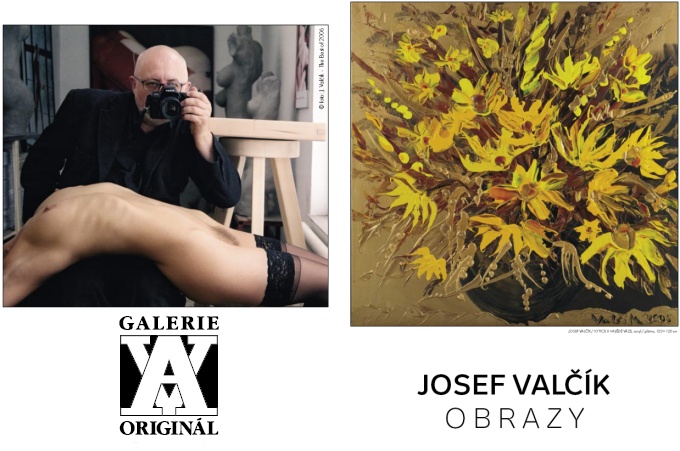Josef Valčík
Josef Valčík is the
protean element of Studio Valčík. He is not protean in the sense
that he changes his approach to art or his style based on some
current trend or fashion. On the contrary – his approaches to
painting, photography and sculpture contain certain features
constant over long periods of time. These features include the
same thematic approaches and motifs, a constant range of works
and genres and constant technical approaches and brushwork. Yet
in spite of these constants, Josef Valčík – unlike the other
members of this studio – is not satisfied with one type of
painting; he continuously moves between the various fine arts,
struggling with their limitations. Josef Valčík began his career
as a painter of landscapes, flower bouquets and nudes and it is
his interest in these genres that was able to pass on to his
children Magda and Aleš. The use of acrylics and a passion for
pastose brushwork has however led him towards abstract
compositions with symbolic references. These works began to
appear in the mid-nineties and have influenced how all of his
previous and subsequent works are viewed. Since that time, his
flower bouquets, nudes and landscapes are simply pretexts for
the unrestricted rhythm of his painting that has become
characteristic for how he sees the world. Josef Valčík may be
considered a protean being for yet another reason. He has
willingly walked into the pictographic cycle of advertising,
visual provocation and kitsch in order to continuously question
the value of his own participation in more complex and
conflicting levels of the “iconosphere”. This is what has led to
polarities of symbolic meaning and empty gestures, commerciality
and independence, and sacredness and obscenity in his work.
These polarities first came to the surface in his nudes and
almost subject-free compositions and reached their full
development in his portraits, hunting scenes and photographic
compositions of painted naked bodies of women and ceramics that
treat naked bodies with irony. If however we attempt to reach
for something in this protean flow of paintings using various
media that motivates their creation, we can see the footprints
of this protean nature in the painted, photographed and sculpted
worlds of Josef Valčík. He begins painting by announcing the
color that will define the shapes on the canvas; he inserts
colors into bodies and gives a ceramic-like patina. We find that
it is not possible to link Josef Valčík with one color or
typical chord. Rather his uses the contrast of dark
monochromatic surfaces with lively multicolored ones. His
photographs bring the immediate and unique to the game of
documentation. His sculpture has always been linked with space
and volume, which can be seen in his varied three-dimensional
shapes of fired clay as well as in the stylized compositions of
movement and the intersection of natural bodies and the
spontaneous and yet severe acrylic splashes. The previously
mentioned polarities in Valčík’s works can be traced through his
photographic, painted and sculpted works. His photographs
reflect connotations of advertising, the tabloid and
commerciality, while his sculptures are important for their
totemic and pseudo-memorial nature. His paintings reflect
possible links to the pure and aural and on the other hand are
full of studiedness and meaning. These three media with their
own internal memories open up a varied horizon of possibilities
and together create a picture of the artist Josef Valčík’s
personality. Each reflects a different ego, a different side of
his being. But it is only through their interaction that we can
truly find signs of his internal integrity.
Professor Marian Zervan,
Ph.D. (b. 1952) is a theoretician and esthetician in the
fields of art and contemporary architecture. I is the author of
books of sacred iconography and as a curator has organized
exhibitions on Slovak architecture at home and abroad. He has
also written the catalogs for these exhibitions. He is an
assistant professor at both the Faculty of Architecture of the
Slovak Technical University in Bratislava and the College of
Fine Arts in Bratislava.
|
